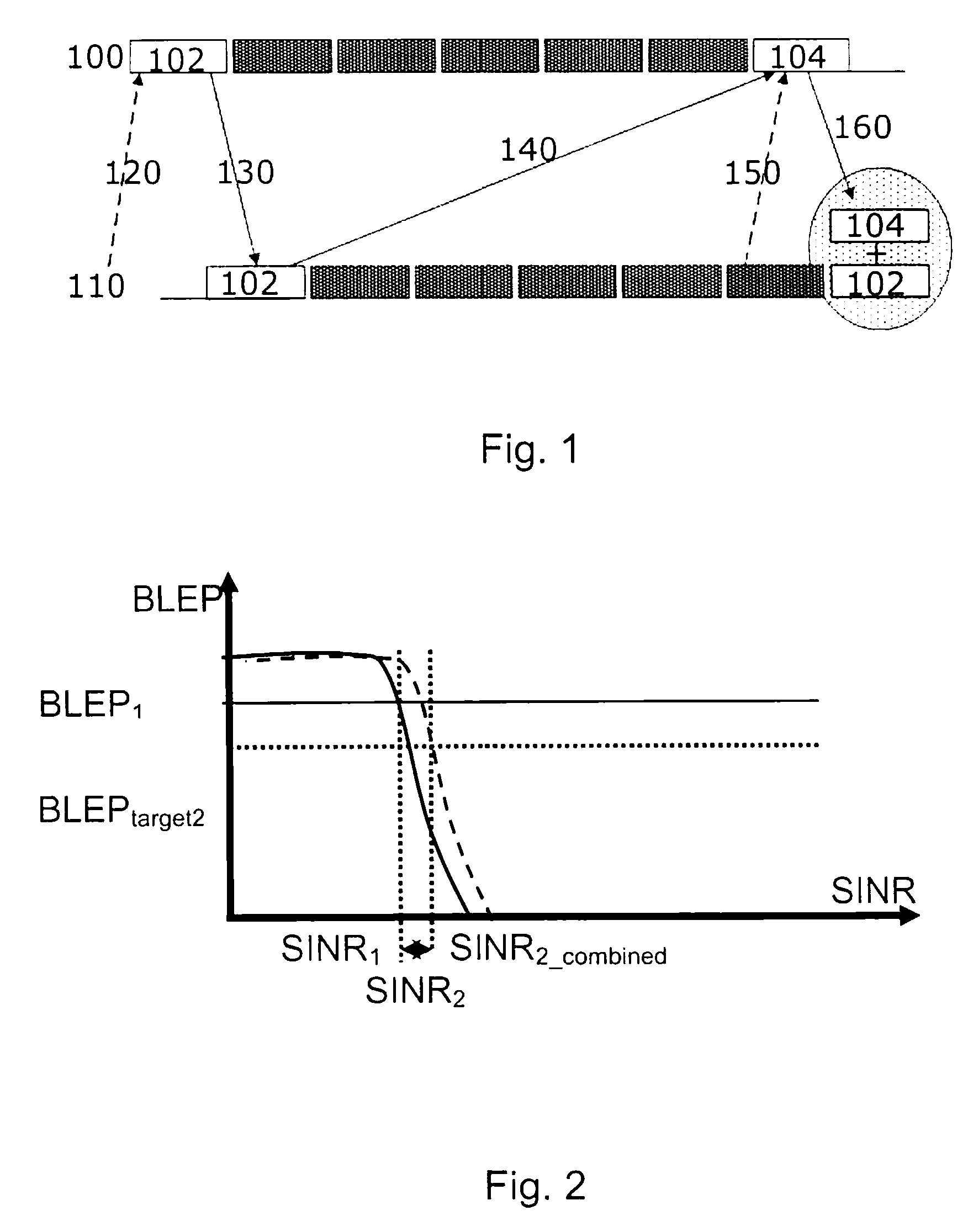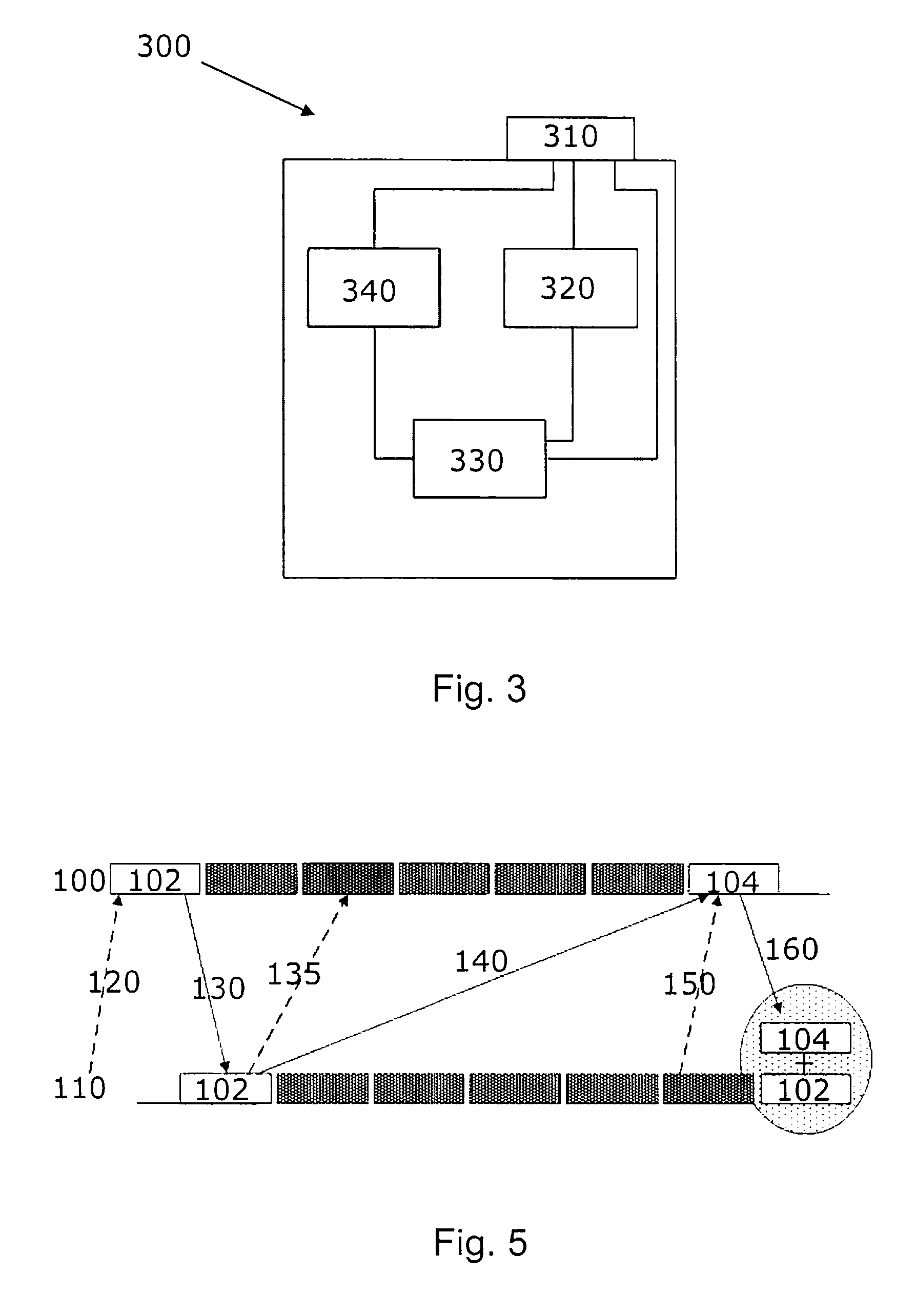Transmission power control in hspda
- Summary
- Abstract
- Description
- Claims
- Application Information
AI Technical Summary
Benefits of technology
Problems solved by technology
Method used
Image
Examples
Embodiment Construction
[0045]FIG. 1 schematically depicts a possible data retransmission scenario in an existing wireless communication network.
[0046]A transmitter 100, in this case a BST (Base Station Transceiver) or a Node B and a receiver 110, in this case a mobile station UE, are communicating via a radio link (not shown).
[0047]Before the transmitter 100 decides to transmit data intended for the receiver 110 it first receives an indication of the channel quality from the receiver 110, which the receiver transmits in the form of a CQI-message 120 (CQI—Channel Quality Indicator). This CQI-message is related to the CQI determined by the receiver during a previous data transmission.
[0048]Thereafter, the transmitter 100 adjusts the transmit power according to the reported channel quality and sends a block of data 102 to the receiver 110 on a downlink channel 130 during a TTI (Transmission Time Interval) which in a HSPDA-based wireless network lasts approximately 3 ms.
[0049]The transmitted power for the fir...
PUM
 Login to View More
Login to View More Abstract
Description
Claims
Application Information
 Login to View More
Login to View More - R&D
- Intellectual Property
- Life Sciences
- Materials
- Tech Scout
- Unparalleled Data Quality
- Higher Quality Content
- 60% Fewer Hallucinations
Browse by: Latest US Patents, China's latest patents, Technical Efficacy Thesaurus, Application Domain, Technology Topic, Popular Technical Reports.
© 2025 PatSnap. All rights reserved.Legal|Privacy policy|Modern Slavery Act Transparency Statement|Sitemap|About US| Contact US: help@patsnap.com



